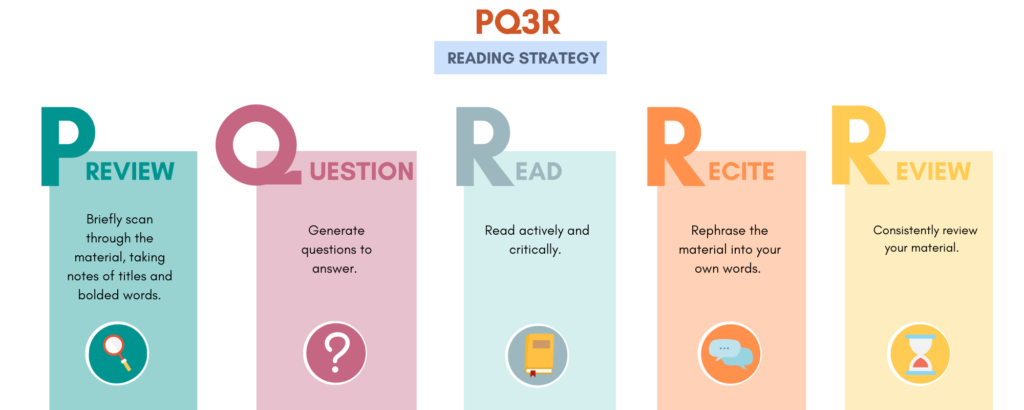Academic Reading
Academic reading requires much more than "just reading". In fact, academic reading IS learning, and requires a complex skill set. These resources have been designed to help you build the skills needed for effective academic reading.
- Be an active reader - Being an active reader means setting reading goals, having a personal purpose for reading, developing an understanding of the organization of the reading, reading selectively, reading to link key ideas to important details and with a view to connecting ideas to a context, and reading thoughtfully and critically.
- Use a strategy - If you choose not to subscribe to any particular strategy, use the principles that underlie them: previewing for an overview, questioning, summarizing, recording ideas in key word form, reciting ideas, reflecting about what was read, reviewing learning regularly.
- Skimming and scanning processes have specialized applications for reading - The process of skimming is helpful for establishing general awareness about the contents of a specific reading. Skimming the structural elements of a reading (headings, sub-headings, topic sentences etc.) is a common way to preview a reading. The process of scanning is used to identify the organization of a reading and then to locate specific information quickly and accurately. Finding a number in a phone book is an example of scanning.
- Record the ideas you find important - in your readings and reflect on and review these regularly. Taking notes provides us with a fairly permanent, abbreviated record to return to so that we can continue to process and think about the ideas we have read. Reviewing these notes regularly helps to keep us thinking and helps support our memory of the knowledge we have encountered.
- Apply questions to what you read - Reading is a tool of thinking. Questioning at various levels moves you to thinking at those various levels. When we ask only the most basic questions, we think only the most basic thoughts. When we question at deeper levels, we think more deeply.
Effective Reading Strategies

Additional Resources
| Resource | Download | Description |
|---|---|---|
| Connecting a Reading to Course Objectives | PDF Word | Worksheet for connecting ideas from your reading to major themes in your course objectives. |
| Critical Reading Strategies | PDF Word | Worksheet for identifying the structure and important information about your readings. |
| Personal Response To A Reading | PDF Word | Worksheet for reflecting on your readings with a few simple questions. |
| PQ3R Guide | How to get the most out of your readings using the PQ3R Reading Strategy. | |
| Effective Reading Strategies | Learning Skills Workshop | |
| Academic Reading Video (11 min) | Learn from Learning Skills Specialist on how to become an active learner. | |
